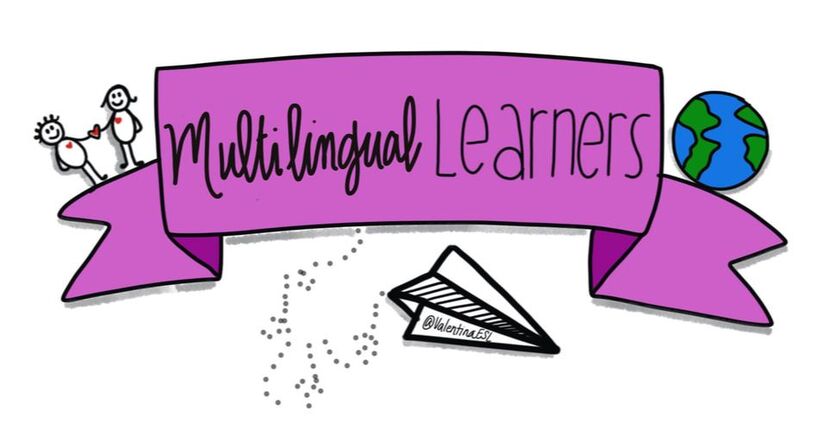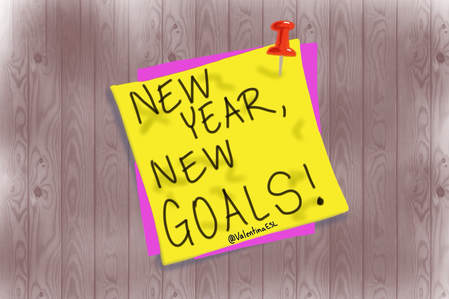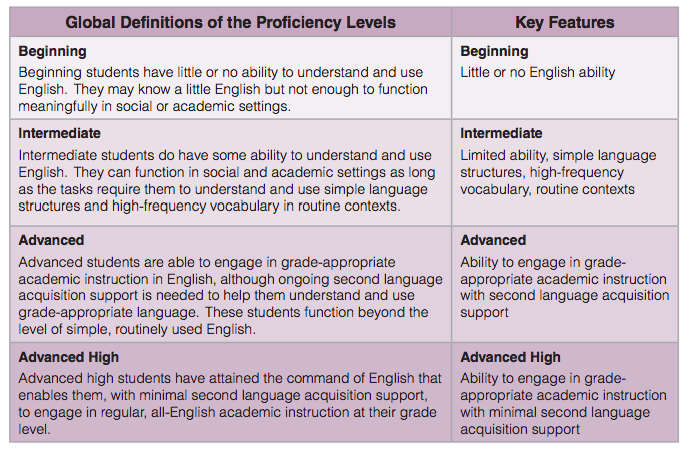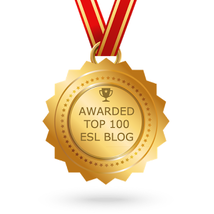Personalizing Learning & ELLsAs tradition has it, at the start of a new year, many of us reflect on the year that passed and begin to set goals for the year ahead. This serves as an ideal time for us to help our students set learning goals too! English language learners (ELLs) may feel like they have a lot on their plate. Some are learning about a new country, culture, content and language all at the same time. We can help our ELLs by setting a few language goals so they have a clear view in mind and a path to follow in order to get there. States have varying ways to help us determine the language levels of our ELLs. In Texas, where I live, we have adopted the English Language Proficiency Standards (ELPS) and we use Proficiency Level Descriptors (PLDs) to guide and assess instruction. Many other states have adopted the WIDA English Language Development Standards. States that use WIDA have access to CAN DO Descriptors. These are excellent for goal setting with students and really personalizing instruction. Here's an example of how I did this with my students: 1. Formative Assessment First, I took a formative assessment of each of my ELLs using the PLDs in listening, speaking, reading, and writing. In order to do this, I observed my students individually and took anecdotal notes. For listening, I observed students in both academic and social settings. I visited with students and listened in on them during classroom discussions and at recess, lunch or in the halls. I looked for clues to see if students comprehended oral instructions, presentation, and information. I watched to see if students needed instructions repeated and if they asked for repetition or more assistance. For speaking, I also observed in both social and academic settings. I paid particular attention to how much students spoke, the length of their responses, the language structure and vocabulary used. When observing reading and writing, I often worked with my ELLs during reading and writing workshop in small groups or conferred one-on-one to assess their current language level. During small group instruction, I was able to find out how students were doing with sight words and decoding. Small group instruction is when I was able take pulse of my students in reading. Did they have little or no ability to read or write in English? Did they have limited ability using simple language and high frequency words? Where they able to engage in appropriate reading and writing with second language acquisition supports? Or where they able to engage in appropriate reading and writing with minimal second language acquisition supports? 2. Determine Next Step Together
One I established a base line for where each of my students was at...their language level in listening, speaking, reading, and writing...then I used that information to help students set goals and personalize their learning. Sharing with ELLs where they are and where the next step is can be powerful! Sometimes the task seems so big that it becomes overwhelming. But when we make it real for them and show them the small steps they can take to get there, it feels doable. ELLs need to know their direction and we are their "guides on the side". Let's help point the way. So I found that meeting individually (conferring) with my ELLs was a great way to share with them where they are and talk about where we want them to be next. Even though I already knew in my mind, where they needed to be next, I wanted them to take ownership of their learning and be part of the process. That's why this conference was important. I wanted them to feel like we were a team working together on their progress. So we talked about each domain-Listening, speaking, reading and writing. We discussed their current level in each domain and the next step. I want to build their capacity for learning and empower them in their journey. 3. What Is It Going To Take? Finally, we discussed together a few of the most important steps that will help them achieve their goals. How will they get to the next level? What steps are necessary? We documented a few concrete, actionable steps that they could be held accountable for in each domain. This step was very important because students could always go back to this list of actions and reflect on what they were doing to assure their success in language development. Were they reading for 30 minutes each day (if that's the goal we set)? Where they speaking in complete sentences? Where they practicing their sight words every evening? Etc. Goals were based on individual student needs so each student had different steps/actions that they were accountable for. 4. Plan Instruction Aligned with Goals Now that we both know where the student is and where they are headed, it's time to plan instruction that aligns with those goals. Knowing that my students will need opportunities to listen, speak, read and write in all content areas using academic vocabulary, I took this information and shared it with the students other teachers as well. In my case, I was a co-teacher that worked with several general education classroom teachers. I shared this information with the teachers involved. During our common planning time, I embedded instructional techniques and activities to help support the ELLs in the classroom with the goals we set. For example, I weaved in opportunities for structured conversations during math and science. I brought in vocabulary picture cards and structured writing activities to accommodate students' in academic classrooms. I included adapted texts in science and social studies to help ELLs read the same content using a scaffold. 5. Celebrate "What's celebrated is repeated." --I don't know who said it...but it's good! Celebrating is important. Each time a student shows progress and growth, we celebrate. Celebrating can take many forms. It can be a simple high five or cheering. It can be a note or phone call home. It can be a positive praise! No matter how we celebrate, it shows that we care about our students' progress. Periodically, approximately at the end of each grading period, I would formatively assess students again to look for growth within the four domains. And this is when we stopped to do major celebrations! What we've known for years is that a One Size Fits All approach to learning does not work in the classroom. This is especially true when it comes to ELLs. Their language development is not going to be the same as the next student which means their instruction will not be the same. Our lessons become not only differentiated but personalized when we work together to build the capacity of the learner. For more information on Personalized Learning you should visit this website by one of my favorite educators, Larry Ferlazzo. His article, Student Engagement: Key to Personalized Learning, was published in ASCD Educational Leadership Magazine March 2017 and is remarkable! In addition, Emily Francis wrote a great blog on Can Do Descriptors and how she uses them. Additional Resources: 7 Reasons Why Differentiated Instruction Works English Language Learners in Public Schools Comments are closed.
|
Categories
All
|



 RSS Feed
RSS Feed
